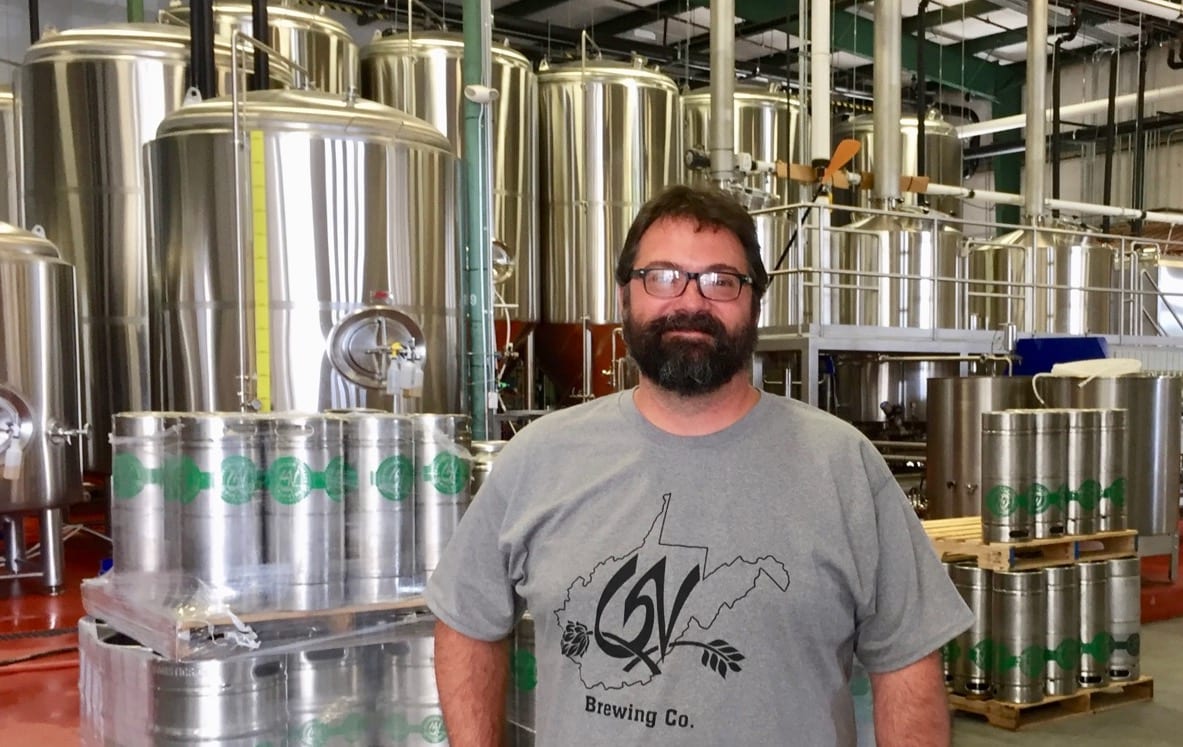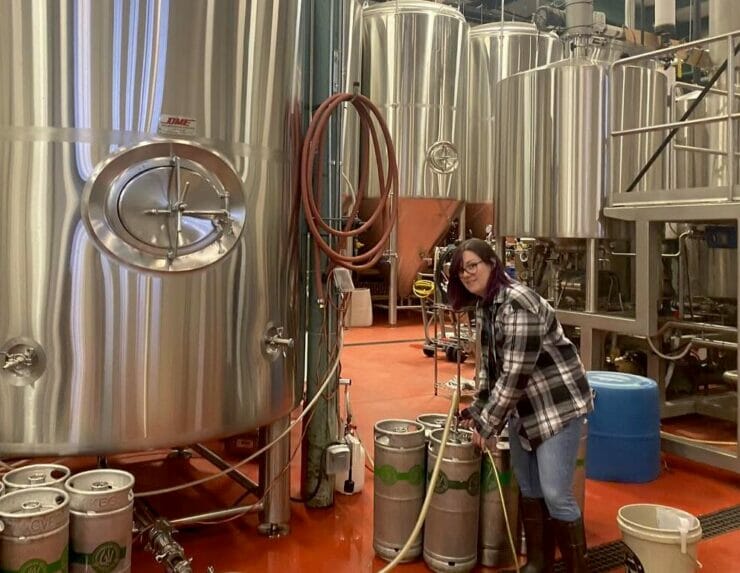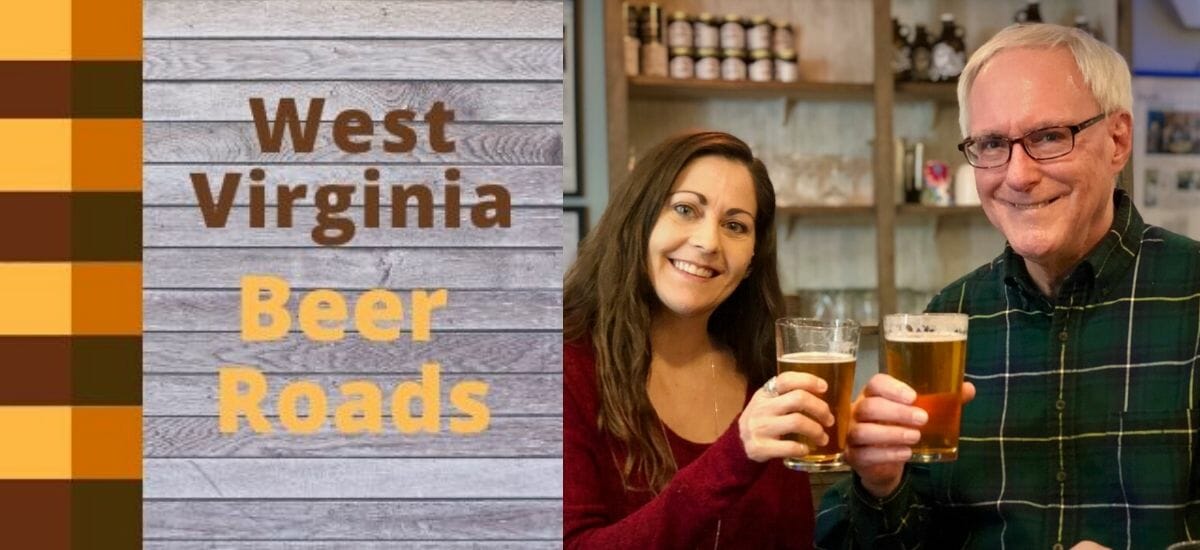
Greenbrier Valley Brewing meets challenge
February 1, 2021
Sure, 2020 was a real different year for the brewery business, but Greenbrier Valley Brewing Company (GVBC) met the challenge, made the adjustments, and positioned themselves for a solid 2021.
The challenges they faced last year were tremendous — ones no one could have predicted. For instance: The COVID-related restaurant and bar shutdowns and pandemic-related drop in all restaurant/bar business sent draft beer sales into a death spiral. During last spring’s shutdown period, when GVBC would have expected to normally sell hundreds of kegs, they sold only 10.
With draft sales tanking, the obvious answer was to boost canned beer production — that is if you could get the cans. With every canning brewery in America facing similar situations, they all ordered lots of extra cans at pretty much the same time last March. With Greenbrier using the 12 oz. can size for its products, that put them in a tougher spot than those brewers using 16 oz. cans.
GVBC’s owner/general manager Bill Heckel explains: “We’ve got to compete with Mountain Dew, Pepsi, Miller Lite, Coke and all the big guys to get our printed cans. The little guy gets pushed to the side a little bit.”
Due to these unexpected delays, little guy GVBC actually ran out of Devil Anse IPA cans in May. A month before their large can order was scheduled to arrive, their can producer had notified them that there would be a least a 4-week delay. Fortunately, GVBC was able to scramble and find a temporary solution with a mobile canning operator that had a supply of blank 12 oz. cans and could quickly produce plastic shrink wrap labels for them. GVBC bought pretty much all they could get and it filled in the gap. While GVBCs margins took a big haircut in this arrangement, at least they could keep some Devil Anse out on the shelves.

You see, Devil Anse IPA has become quite the juggernaut for GVBC. It accounts for 53 percent of their total sales. It has been jumping off the shelves and gaining expanded distribution even during 2020. It’s now common to find Devil Anse in pretty much every chain convenience store cold box. The beer’s positive sales momentum has also led GVBC’s charge in grocery stores, where the brewery is finding great success in obtaining floor displays, in-aisle displays, and shelf features. It’s great to walk into a Walmart and find a big case stack of Devil Anse on an endcap. It wasn’t this way a couple of years ago.
Sticking with core line helps
GVBC’s brand building strategy centers around selling typically no more than five core brands. It’s quite a different strategy than that which you see at many of the West Virginia’s smaller specialty breweries. Many smaller breweries tend to release a new beer or two every few weeks. They keep interest high by their customers always wanting to try what’s new. GVBC, on the other hand, has to build business by producing highly consistent, well-crafted popular-priced brews with a pleasant taste that the drinker can count on time after time, month after month. It is the business strategy you need to do well in the chain store environment, because chains do best selling things that are more standardized. GVBC appears to be mastering this strategy.
Alex Durand, GVBC’s director of sales and marketing, says that sticking with their core line in the big chains helps the stores compare year over year sales performance over the past 2 or 3 years. Their strong sales growth allows GVBC toward the chain store buyers to greatly expand GVBC distribution and improve brand visibility. Each improvement added to the brand’s momentum and created sort of a snowball effect. Alex illustrates the growing momentum by explaining that when GVBC six packs get a display in one store, the store across the street typically says they want that beer too. You can see how things could grow from there — that is as long as the beer actually sells through. And that doesn’t seem to be much of a problem these days for GVBC.
“One of our buyers mentioned that we were the number one selling craft beer in their chain,” Alex says. GVBC was actually outperforming all the regional and national craft brands. This anecdote alone says volumes about the huge importance of Greenbrier Valley Brewing in the development of our local craft beer culture.
Staffing takes work
Providing a health safe workplace is high on the brewery’s priority list. To help keep COVID out of the brewery, GVBC closed its taproom for several month of last year, then closed of greatly limited its hour every time the pandemic spiked. Their spacious production brewery allows for social distancing during most operations and potentially exposed employees are asked to quarantine at home. GVBC provides masks to employees and to those who want to enter the taproom but don’t have one. Luckily, they have not had an employee contract the virus.
Speaking of employees, when you get up to the level of 13 employees like GVBC has, you do expect some turnover. And they’ve had some recently, but they have been able to find very capable replacements. GVBC maintains a strong core brewing team led by the experienced and talented Brian Reymiller.
In a first for a West Virginia brewery, GVBC hired the state’s first official US. Department of Labor recognized brewing apprentice through the brewing technology program at Bridge Valley Community and Technical College. Samantha Fox will work with the brewery throughout the year while also completing coursework at the college as part of her associates degree program.

GVBC brings female workers into their brewery workforce at a higher rate than the national average for the industry. Nationally, women make up about 25% of the workforce in beverage manufacturing. At GVBC the number is 38% female.
Watch the West Virginia Beer Roads video to hear our entire interview with GVBC’s Bill Heckel and Alex Durand. See how they are tackling the market. 46 minutes chock full of great information about the current state of our brewing industry. Released Jan. 30, 2021

